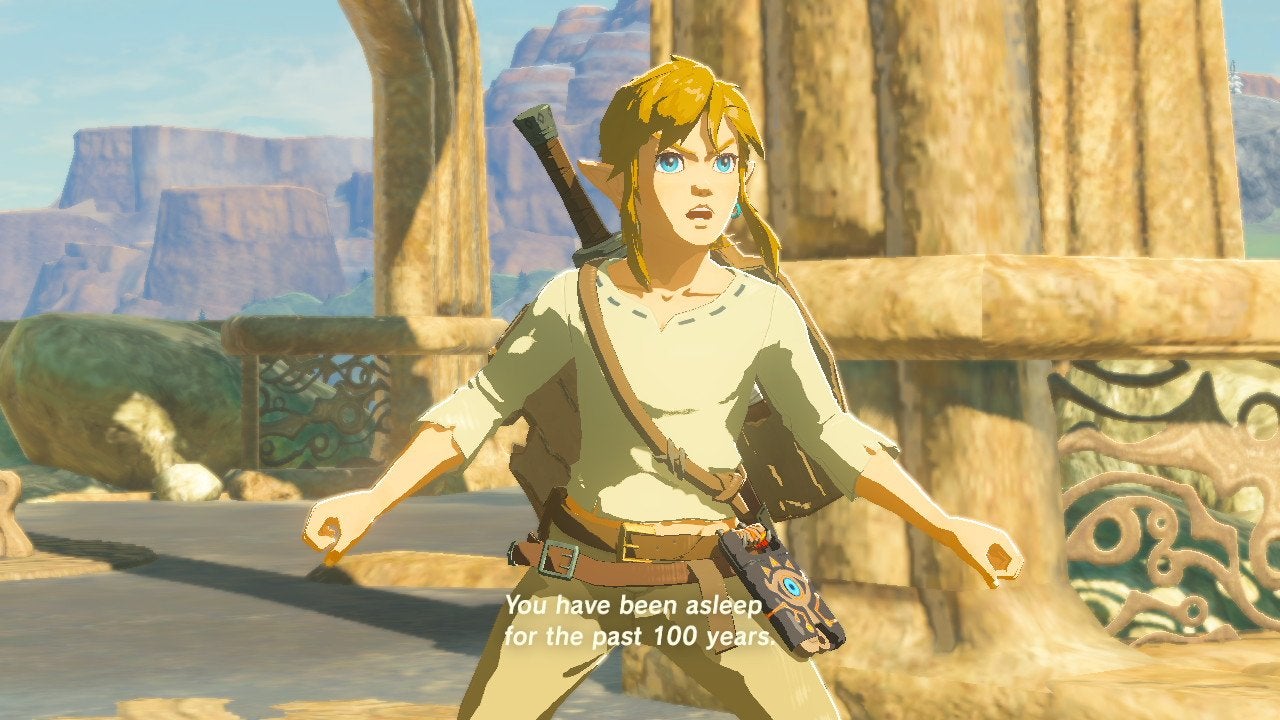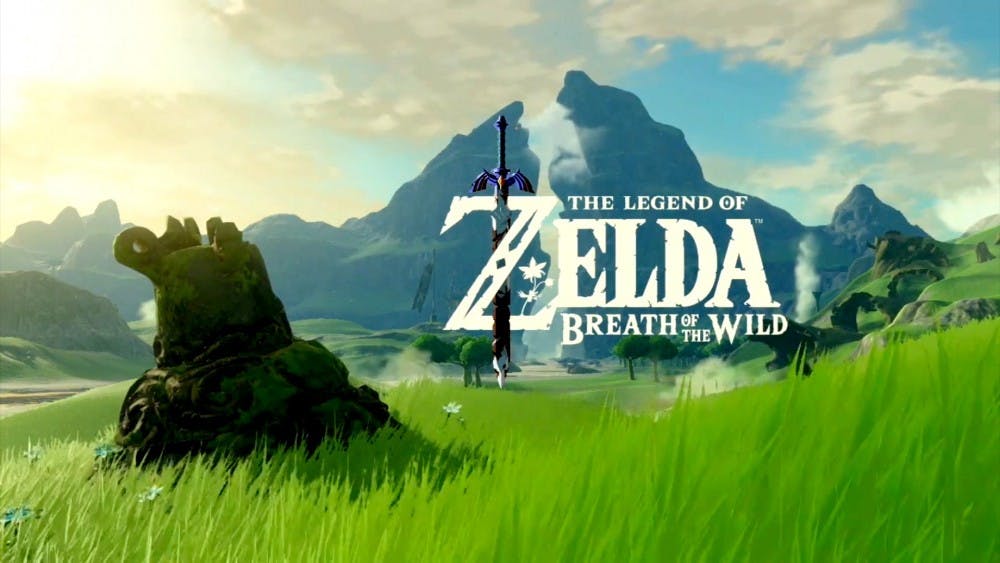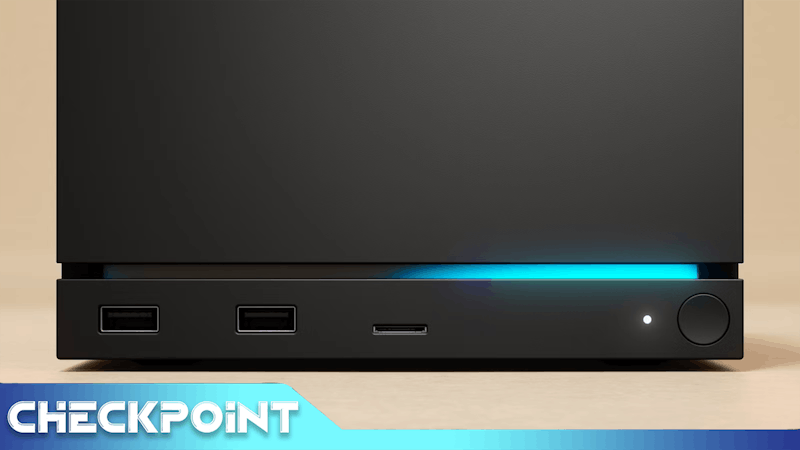This review is based on the Nintendo Switch version of The Legend of Zelda: Breath of the Wild.
The Legend of Zelda: Breath of the Wild seems to have abandoned the classic Zelda game structure. The newest entry in the venerable franchise has adopted major elements from open-world games. How does it reconcile the classic style with the modern elements while managing to stand out from similar entries in the genre?
Simple story lets gameplay shine
Breath of the Wild begins with Link awakening after a hundred year slumber in the Shrine of Resurrection. Shortly after, an old man guides Link through the initial area of the game, slowly revealing events of the past.
Essentially, a hundred years prior to Link’s awakening, an evil force known as Calamity Ganon had attacked the familiar kingdom of Hyrule. In an attempt to defeat Calamity Ganon, Princess Zelda deployed a cast of heroes to face Ganon, but fell one by one. Knowing Link was imperative to Ganon’s defeat, she saved the then fatally wounded Link and had him preserved in the Shrine of Resurrection while she faced Ganon alone. Now trapped as Ganon’s prisoner, Princess Zelda’s only hope is Link who must rescue Hyrule from Ganon’s evil grasp.
As the game progresses, more elements of the story unlock to reveal a deeper narrative. There are smaller, other aspects of the story that gradually reveal more of past events, allowing for a few interesting plot  developments. These plot developments aren’t exactly groundbreaking or innovative, however there is enough substance to warrant genuine interest. This narrative is similar to tons of other RPGs. This is not necessarily a negative aspect of Breath of the Wild;the focus of the game lies more in the gameplay than in the story. Overall, the simplicity allows for an easy to follow story that remains from growing contrived while still providing a satisfying narrative.
developments. These plot developments aren’t exactly groundbreaking or innovative, however there is enough substance to warrant genuine interest. This narrative is similar to tons of other RPGs. This is not necessarily a negative aspect of Breath of the Wild;the focus of the game lies more in the gameplay than in the story. Overall, the simplicity allows for an easy to follow story that remains from growing contrived while still providing a satisfying narrative.
Survival, exploration and imminent death
The amount of possibilities related to survival and strategic planning make Breath of the Wild a unique experience even for those who have played other open world games.
Instead of focusing on story, Breath of the Wild places most of its attention on gameplay, featuring vastly different mechanics than past Zelda titles. Breath of the Wild places a heavy emphasis on survival; thus elements of the wild play a much larger role in the game than in past titles in the franchise as well as other modern open world games. Weather can impair Link’s progression by lowering his body temperature which eventually results in death, making slopes difficult to climb due to rain, or spawning deadly lightning strikes. With this in mind, players must take various aspects of the environment into account in order to survive. While this is an immersive aspect of the game, it can become quite grating when virtually anything can kill you. Simply walking around in the rain can cause uncertainty when the threat of electrocution looms overhead. These environmental threats could result in multiple resets and slowed progression, but ultimately the  survival aspect of Breath of the Wild is a refreshing, unique addition and adds a layer of difficulty that is welcome in the franchise.
survival aspect of Breath of the Wild is a refreshing, unique addition and adds a layer of difficulty that is welcome in the franchise.
Link’s physical limits also pose a challenge while braving the wilderness. At the beginning of the game, Link has three hearts and a small amount of stamina to venture the world. Stamina is a major concern as it is used when swimming, climbing, running, and paragliding. With the exception of running, when Link’s stamina empties while performing an activity, he will either drown or likely fall to his death. Because of this, stamina must be carefully managed. This mechanic serves as a great balance to keep the game from being too easy; everything can be explored, but exploring everything isn’t necessarily a walk in the park.
Traveling from one area to the next will constitute most of the journey. Viewing the beautiful scenery is nice for awhile, but there are a few methods that can make the journey faster. To navigate Hyrule in one of the game’s most efficient ways, players will want to discover the various towers spread around the land. Doing so will unlock a an overview of the region on the map and allow players to fast travel to the newly discovered tower. The towers are an excellent way to easily jump between different areas of the map without making the game too easy. While towers are fairly easy to find, scaling them can pose a challenge due to the various enemies that can be placed around the tower. Despite the potential danger, the reward of being able to fast travel to various areas of the map and avoid constant running is absolutely worth it.
The selection of weapons is fairly similar to past titles (bows, shooting arrows, and swords, for example). From the beginning of the game, various weapons can be found relatively quickly. While initially making use of low-leveled weapons like sticks and rusty swords, higher powered options become commonplace as Link fends off stronger enemies and explores Hyrule. While weapons appear often, they break after a few uses. Unlike past entries, Link must constantly acquire new weapons as older ones break. This newly added mechanic demands that players are flexible in their weapon consumption and utilize the surrounding environment. Not enough arrows? Look around to see if rocks can be pushed onto the enemy. Maybe a torch can be lit to cause extra damage. There are multiple options to combat, keeping battles from becoming too tedious or repetitive.
While weapons and shields offer Link some protection, players are still likely to die repeatedly, especially at the beginning of the journey. With poor armor and limited weapon choice, Link is vulnerable to enemy attacks. While the constant deaths quickly become annoying, the option to leave an area and return later with enhanced armor and weapons is always open. There is no real level progression; some areas simply contain higher leveled enemies than others. With this in mind, it is up to the player to determine what order to accomplish tasks in and which areas to initially avoid. For example, after leaving the starting area of the game, players can take on Calamity Ganon immediately if desired. Death is almost certain, but the option exists. The game does not limit the player to a linear style of gameplay; multiple options are  possible and even encouraged.
possible and even encouraged.
The most notable addition to Link’s arsenal is the Sheikah Slate which allows Link to harness various powers such as summoning bombs, magnetizing items, forming ice pillars on water, or freezing items in place. This device is mostly utilized in Shrines which feature puzzles of varying difficulty. The varied abilities of the Sheikah Slate are often the solution to a difficult problem, or even allow for a few shortcuts if the player is clever enough. The Sheikah Slate is also useful outside of Shrines to solve small puzzles throughout Hyrule and maneuvering difficult to reach areas.
Shrines scattered throughout the world offer a change of pace from combat and questing. Inside these shrines are puzzles that can either be solved in a matter of minutes or take an hour to figure out depending on the cleverness of the player. As mentioned previously, there are usually multiple ways to figure out the solution to these puzzles, which allows for a more personalized gameplay experience. The reward for solving these puzzles, Shrine Orbs, are imperative to enhancing Link’s abilities. This entices players to further explore and discover shrines to further develop Link’s abilities to survive the wild.
Breath of the Wild supplies nearly limitless options for various styles of gameplay. Taming horses, lighting fires, and paragliding are also welcome additions to the game. There is honestly so much new content to enjoy, and players are likely to become engrossed in all the potential activities Breath of the Wild has to offer. The amount of possibilities related to survival and strategic planning make Breath of the Wild a unique experience even for those who have played other open world games. With so much to do, Breath of the Wild will be sure to keep players attention for hours upon hours of gameplay.
Ain’t no mountain high enough
Nintendo promised an expansive, open world would be the focus of Breath of the Wild, and they surpassed expectations. Breath of the Wild is absolutely gorgeous to look at and traverse through. The expansive world is filled with bright colors, varied environments, and living creatures to compliment the sprawling landscapes. Exploring these enticing environments is one of the most exciting prospects of the game as there is always something new to uncover. Unlike most open world games, everything around :format(webp)/cdn0.vox-cdn.com/uploads/chorus_image/image/53618653/2017030317484300_F1C11A22FAEE3B82F21B330E1B786A39.0.jpg) the player is eligible for exploration. Breath of the Wild encourages players to climb every mountain, follow every river, cross each meadow, and paraglide through the skies. Players are often rewarded for seeking out new areas with items or shrines, making exploration not only enjoyable but necessary to fully experience all Hyrule has to offer.
the player is eligible for exploration. Breath of the Wild encourages players to climb every mountain, follow every river, cross each meadow, and paraglide through the skies. Players are often rewarded for seeking out new areas with items or shrines, making exploration not only enjoyable but necessary to fully experience all Hyrule has to offer.
While the open world is a welcome addition to the Zelda series, there does seem to be an emptiness within the seemingly lively realm. Though wild animals and NPCs inhabit the world, more often than not there are huge stretches of fields or mountains with no interactions enemies, shrines, or notable items. The scenery is nice to look at, but trekking from one tower to the next can become a chore when there is little to nothing to offer a distraction from walking or riding a horse. This isn’t to say that the game is devoid of life, but spacing out enemy camps, towns, outposts, and travelers would help to make Hyrule feel more alive. The idea of an untamed wilderness is certainly appealing for exploration but grows tiring when looking for a side quest, fulfilling the main quest, or seeking character interactions to break the tedium of traveling.
Nearly perfect performance
…performance issues are far more noticeable when the Switch is docked rather than when it is being played as a handheld.
Being the first in the Zelda series to feature a completely open world, the game is surprisingly lacks significant graphical flaws. Similar series such as Elder Scrolls or The Witcher often feature prominent gameplay or graphical errors, especially after initially releasing, but Breath of the Wild seems to have avoided many of these flaws.
Performance issues are far more noticeable when the Switch is docked rather than when it is being played as a handheld and while a bit distracting, does not detract much from the experience. While the lack of initial errors is impressive, Breath of the Wild does possess some minor annoyances such as shaky character animations during cutscenes. Cutscenes aren’t necessarily rare, but most time is spent running from one destination to another or fiddling around in the wild rather than watching cutscenes. Furthermore, this issue mostly applies to characters when they are closer to the screen, lessening the scope of the problem.
Another notable flaw is the drop in frame rate especially in the beginning area of the game. Upon initially starting the game, this drop was fairly frequent. While this beginning area is not unplayable by any means, the sudden fall in quality is a disappointment considering that Breath of the Wild is meant to exemplify the graphical innovations and capabilities of the Nintendo Switch. Luckily, as the game progressed, the amount of frame rate drops gradually died down. After leaving the starting area of the game, the issue became non-existent, except when the Switch was docked. Despite these minor gripes, Breath of the Wild runs extremely well and shouldn’t cause many problems for players in terms of performance.



















